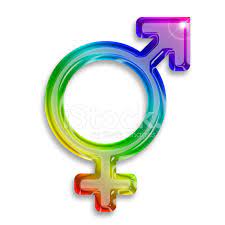Hot flashes are one of the most commonly reported symptoms of menopause, affecting millions of women as their bodies undergo hormonal changes. These sudden feelings of warmth, often accompanied by sweating and a racing heart, can be uncomfortable and disruptive to daily life. While there are various methods to manage hot flashes, estrogen therapy is one of the most widely discussed options. In this article, we’ll explore what hot flashes are, how estrogen can help, and the various treatment options available, along with their pros and cons.
What Are Hot Flashes and Why Do They Happen?
Hot flashes are sudden feelings of intense warmth, usually centered around the face, neck, and chest, followed by sweating and sometimes chills. They can last anywhere from a few seconds to several minutes and are often triggered by hormonal fluctuations during menopause. This is when the ovaries decrease their production of estrogen, leading to an imbalance in the body. As estrogen levels drop, the hypothalamus, which regulates body temperature, becomes more sensitive, causing the body to react as if it’s overheating.Feminization StoriesDo Men Get Breast ImplantsEstrogen And Progesterone Positive Breast Cancer
These fluctuations can result in various uncomfortable symptoms, with hot flashes being the most notable. Women may experience them during the day or night, the latter being termed "night sweats." While often associated with menopause, hot flashes can also occur due to other factors such as hormonal treatments, certain medications, or health conditions. Understanding the triggers and mechanisms of hot flashes can help in finding effective relief.
How Estrogen Works to Alleviate Hot Flashes
Estrogen plays a pivotal role in regulating various bodily functions, including the body’s temperature control. When estrogen levels decline during menopause, the hypothalamus becomes more reactive to slight changes in body heat, leading to hot flashes. By supplementing estrogen through therapy, women can help stabilize their hormonal levels, reducing the frequency and intensity of hot flashes. Essentially, adding estrogen back into the system helps to "calm" the hypothalamus, making it less likely to overreact to minor temperature changes.
Research has shown that estrogen therapy can significantly alleviate the discomfort associated with hot flashes. In fact, many women report an improvement in overall quality of life after starting treatment. While estrogen can be effective, it is important to tailor the treatment plan to each individual, considering their health history, symptoms, and lifestyle.
Types of Estrogen Treatments Available Today
There are several forms of estrogen therapy available, each with its unique delivery method and dosage. The most common forms include oral tablets, transdermal patches, gels, and vaginal rings. Oral tablets are the traditional form, wherein estrogen is ingested and metabolized through the digestive system. Transdermal patches provide a steady dose of estrogen directly through the skin, while gels allow for easier application and faster absorption.
Additionally, estrogen can be combined with progestin for women who have not undergone a hysterectomy, as this helps to protect the lining of the uterus from potential overgrowth. The choice of treatment often depends on personal preference, specific health considerations, and the severity of symptoms experienced. Consulting with a healthcare professional can help determine the most suitable option.
Pros and Cons of Using Estrogen for Hot Flashes
Like any treatment, estrogen therapy has its advantages and disadvantages. On the pro side, many women find significant relief from hot flashes and night sweats after starting estrogen therapy. This improvement can lead to better sleep, enhanced mood, and an overall improved quality of life. Estrogen therapy is also beneficial for preventing bone density loss, which is important for women at risk of osteoporosis after menopause.
On the downside, estrogen therapy is not suitable for everyone. Some women may experience side effects such as breast tenderness, nausea, or headaches. There are also potential risks associated with long-term estrogen use, including an increased risk of blood clots, stroke, and certain types of cancer. Thus, it is crucial for women to weigh these pros and cons with their healthcare provider to make an informed decision.
Natural Alternatives to Estrogen for Hot Flashes
For those who prefer not to use estrogen or are not candidates for hormone therapy, there are several natural alternatives worth considering. Phytoestrogens are plant-derived compounds that mimic estrogen and can be found in foods such as soy, flaxseeds, and legumes. Incorporating these foods into your diet may help mitigate hot flashes and provide some relief.
Other natural remedies include lifestyle changes, such as maintaining a healthy weight, engaging in regular physical activity, and practicing relaxation techniques like yoga and meditation. Herbal supplements, such as black cohosh and evening primrose oil, are also popular among women seeking natural relief. However, it’s important to consult with a healthcare professional before trying any supplements to ensure they are safe and appropriate for your individual health needs.
When to Consider Estrogen Therapy for Symptoms
Determining when to start estrogen therapy can be a personal decision based on the severity of symptoms and their impact on daily life. Women experiencing frequent, disruptive hot flashes that interfere with sleep, work, or relationships may benefit from discussing estrogen therapy with their healthcare provider. It’s crucial to consider individual health factors, including existing medical conditions, family history, and lifestyle.
It’s also worth noting that some women may seek out estrogen therapy even if their hot flashes are mild if they have a strong preference for a more proactive approach to managing menopause symptoms. Ultimately, the decision should be made collaboratively, taking into account personal preferences and medical advice.
Potential Side Effects of Estrogen Treatment
While many women experience positive outcomes from estrogen therapy, it’s important to be aware of potential side effects. Common side effects may include breast tenderness, bloating, and mood swings. Some women have reported headaches or nausea, especially when starting treatment or adjusting dosages.
More serious risks, while less common, include blood clots, heart attack, and stroke, particularly for women who smoke, are obese, or have a history of cardiovascular issues. It’s essential to have an open dialogue with your healthcare provider to monitor any potential side effects and to adjust treatment if necessary, ensuring safety while managing symptoms effectively.
Tips for Managing Hot Flashes Beyond Medication
In addition to medication, there are various strategies women can employ to manage hot flashes more effectively. Maintaining a cool environment can play a significant role; using fans, wearing breathable fabrics, and keeping the thermostat at a comfortable temperature can help reduce discomfort. Layering clothing allows for easy adjustments when a hot flash occurs.
Incorporating relaxation techniques, such as deep breathing exercises, yoga, or mindfulness meditation, can also help manage stress and mitigate symptoms. Staying hydrated, avoiding known triggers like spicy foods or alcohol, and engaging in regular physical activity can contribute to overall well-being and may lessen the frequency of hot flashes. Finding a combination of approaches that work best for you can lead to a more comfortable experience during this transitional phase.
Hot flashes can be an unwelcome part of the menopausal journey, but understanding the options available can empower women to take control of their symptoms. Estrogen therapy offers a viable solution for many, with various forms and strategies to consider. However, it’s essential to weigh the benefits and risks, and to explore alternative methods if preferred. By adopting a comprehensive approach that includes lifestyle changes, natural remedies, and medication when necessary, women can navigate this phase of life with greater ease and confidence.


